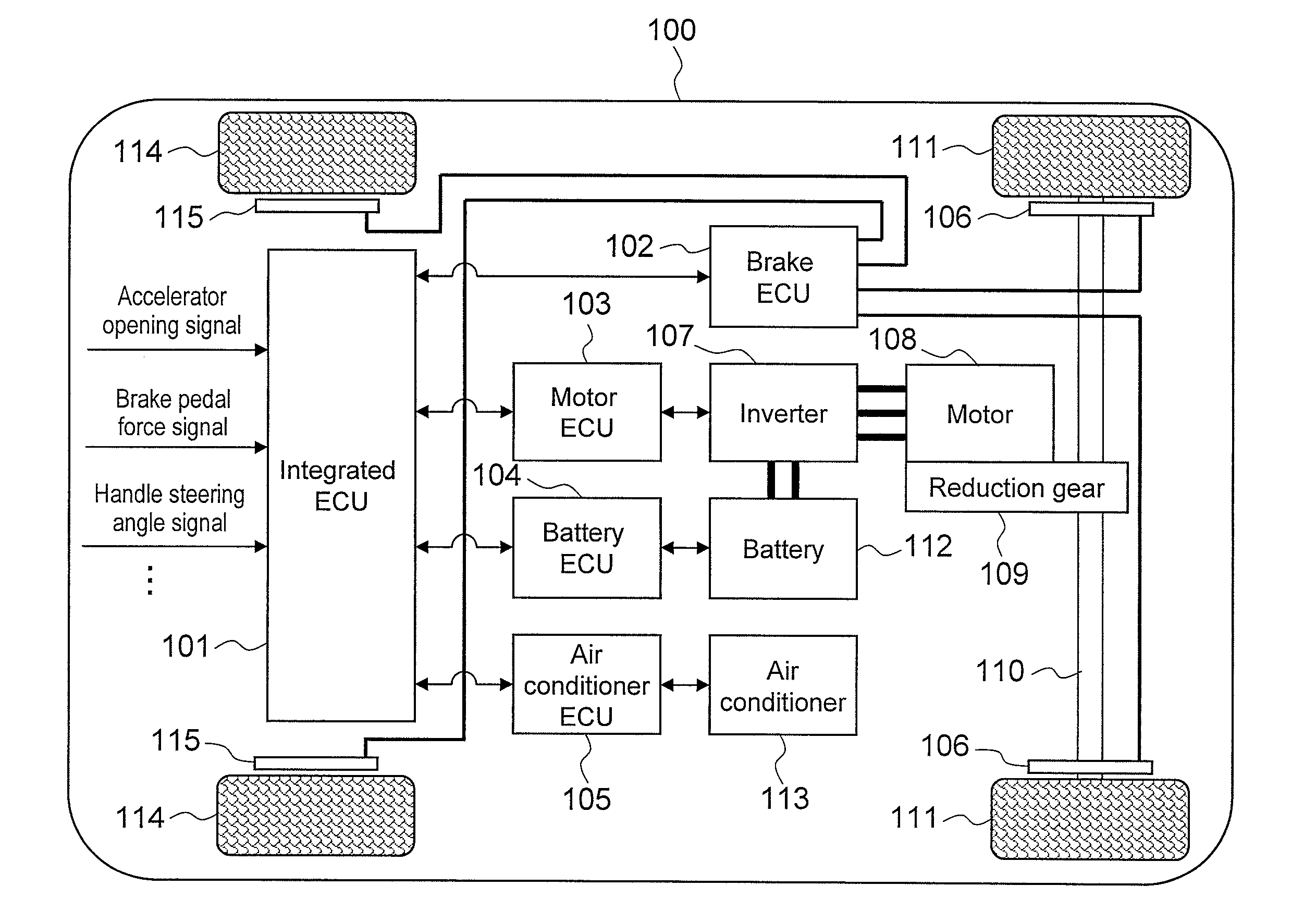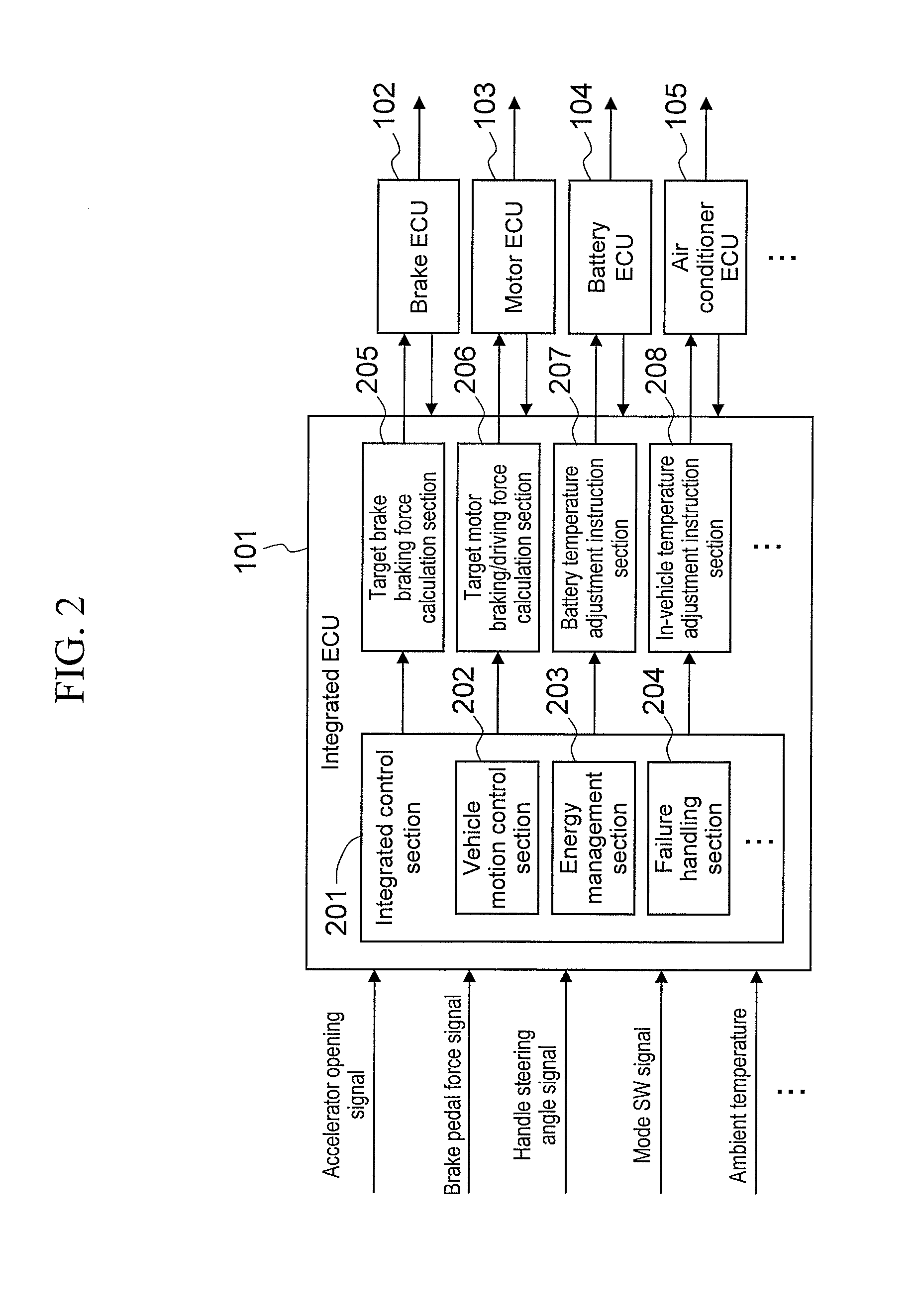Battery Temperature Control Device
a lithium ion battery and temperature control technology, which is applied in the field of battery temperature control devices, can solve the problems of increasing battery power consumption, reducing the range of electric vehicles, and affecting the service life of secondary cells, so as to prevent deterioration, suppress battery power consumption, and improve the range of vehicles
- Summary
- Abstract
- Description
- Claims
- Application Information
AI Technical Summary
Benefits of technology
Problems solved by technology
Method used
Image
Examples
first embodiment
[0032]FIG. 1 schematically shows the system configuration of an electric vehicle 100 to which a first embodiment of the battery temperature control device according to the present invention is applied.
[0033]The electric vehicle 100 includes a battery (a lithium ion battery) 112, an inverter 107 for performing power conversion on the battery 112, and a motor 108 that is driven by the power of the inverter 107, and motor driving force generated by the driving of the motor 108 is transmitted to drive wheels (front wheels) 111 via a reduction gear 109 and an axle (a drive shaft) 110, enabling a desired travelling state to be achieved. Also, brake discs 106 and 115 are provided respectively to the front wheels 111 and rear wheels 114 of the electric vehicle 100, and the turning of the front wheels 111 and the rear wheels 114 can be controlled according to an operation or the like of a user. The electric vehicle 100 further includes an air conditioner 113, and is capable of realizing suit...
second embodiment
[0064]FIG. 7 schematically shows a second embodiment of the battery temperature control device. Additionally, a battery temperature control device 600 of the second embodiment differs from the battery temperature control device 500 of the first embodiment in that the target battery temperature calculation section 301 is simplified by fixing the target battery temperature of the target battery temperature calculation section 301 to the recommended temperature range median value (for example, 20° C.), and in that a power supply limiter for battery temperature control 303 is provided after the PID feedback controller 302 of the battery temperature control section 210, and other structural elements are the same of those of the battery temperature control device 500 of the first embodiment. Accordingly, the structural elements same as those of the battery temperature control device 500 of the first embodiment are denoted with the same symbols and detailed description thereof is omitted.
[...
PUM
| Property | Measurement | Unit |
|---|---|---|
| temperatures | aaaaa | aaaaa |
| temperatures | aaaaa | aaaaa |
| temperatures | aaaaa | aaaaa |
Abstract
Description
Claims
Application Information
 Login to View More
Login to View More - R&D
- Intellectual Property
- Life Sciences
- Materials
- Tech Scout
- Unparalleled Data Quality
- Higher Quality Content
- 60% Fewer Hallucinations
Browse by: Latest US Patents, China's latest patents, Technical Efficacy Thesaurus, Application Domain, Technology Topic, Popular Technical Reports.
© 2025 PatSnap. All rights reserved.Legal|Privacy policy|Modern Slavery Act Transparency Statement|Sitemap|About US| Contact US: help@patsnap.com



